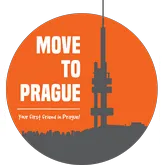The Troja footbridge linking Stromovka to Prague Zoo has been completed and is now undergoing load testing to ensure it is safe. The footbridge should be open to the public at the end of October.
The load tests began September 22. During the static test, vehicles with precise parameters move to predetermined positions, and then the structural load of the footbridge is measured and evaluated. Everything is repeated for five scenarios.
“I am very glad that the opening of the Troja footbridge to the public is undeniably approaching, and we are thus rapidly correcting the mistakes of the previous Prague leadership, which let it fall. I believe that the new footbridge will be appreciated not only by the inhabitants of Prague 7 and Troja in everyday life, but also by everyone,” Prague Mayor Zdeněk Hřib (Pirates) said.
“Visitors to the city will again be able to take a comfortable walk through Stromovka park or along the Vltava River, for example, to the Botanical Garden or [Prague] Zoo,” he added.
A dynamic test will then verify the dynamic characteristics of the structure. The structure’s oscillation frequencies will be determined and compared with the project assumptions. This test will last three days.
“We are approaching the finish line of the connection between Troja and Císařský ostrov. The load tests are a prerequisite for the approval of the Troja footbridge and its subsequent opening, which we plan at the turn of October and November. It is a success that we manage to complete the footbridge quickly even without a special law, such as in Genoa, Italy, [where there was another bridge collapse],” Prague Deputy Mayor Adam Scheinherr (Praha sobě), responsible for transport, said.
“The preparations were also complicated by the zoning plan, which did not take it into account. Fortunately, we will be able to walk on it soon. Its legacy is an important point that we need to take care of Prague's bridges. After our arrival, we ensured that similar tragedies did not happen again,” he added.
“For example, the Technical Roadway Administration (TSK) strengthened the monitoring of bridge conditions, started a complete renovation of those in an emergency condition and, to a greater extent, started diagnostic tests, including load tests at Hlávkův, Palackého and Libeňský bridges. Thanks to that, we really get to know the bridges in detail and we plan renovations faster and of better quality,” he said.

All construction on the Troja footbridge has been completed. Currently work is being carried out on both front areas of the footbridge — for example, landscaping, completion of access roads, public lighting and stairs on the left bank. Only minor modifications are being solved on the footbridge itself and details are being completed.
“We are all looking forward to the footbridge. Thanks to the chosen steel construction, the bridge will be stronger, safer, and it will also be easier to diagnose the condition. The new footbridge is now one and a half meters higher than it was originally, to prevent damage in the event of a flood. It is also wider and therefore has more capacity, so that pedestrians and cyclists will fit comfortably. They will no longer have to dismount, and an ambulance will be able to cross the footbridge if necessary. We are really looking forward to the new Troja footbridge,” Prague 7 Mayor Jan Čižinský (Praha 7 sobě) said.

“After the collapse of the Troja footbridge in December 2017, this important pedestrian and bicycle connection between Troja and Císařský ostrov and Stromovka was replaced by a ferry, which, however, could not travel in all circumstances. … Therefore, I am very pleased for all the inhabitants and visitors of Troja that the deadline for the construction of the new Troja footbridge has been shortened and we will all be able to walk on it again at the end of October,” Prague-Troja Mayor Tomáš Bryknar said.
Construction began last November. The new steel-reinforced construction has a service life of 100 years.
Before the previous bridge collapsed in December 2017, it was found to be in poor condition. A 2014 examination showed that corrosion of the steel support cables had weakened the bridge. In 2011, the last time the bridge was repaired, engineers said it had between five and seven years of use left.

The failed bridge, designed by architect Jiří Stráský, was completed in 1984. It replaced a bridge that was destroyed in a flood in 1981.
Original footbridge architect Stráský and TSK’s former head of bridges Antonín Semecký have been accused for that bridge’s fall. The indictment accuses Stráský of insufficient supervision over the construction of the footbridge and technical errors in its design. The case is being heard by the Prague 7 District Court.
The city is seeking to hold Stráský and Semecký liable for 8.2 million CZK to cover removal of the collapsed structure. Another 2 million CZK are claimed by insurance companies, and compensation for two injuries are claimed. The fall of the footbridge injured four people, two lightly and two severely.
The collapse of the Troja footbridge drew attention to the overall condition of bridges in the city. Almost one-fifth of the 700 bridges in Prague were found to be in poor, very poor or emergency condition, according to a 2018 report submitted to City Hall’s transportation Committee by the Technical Roadways Administration (TSK).












 Reading time: 4 minutes
Reading time: 4 minutes 



























